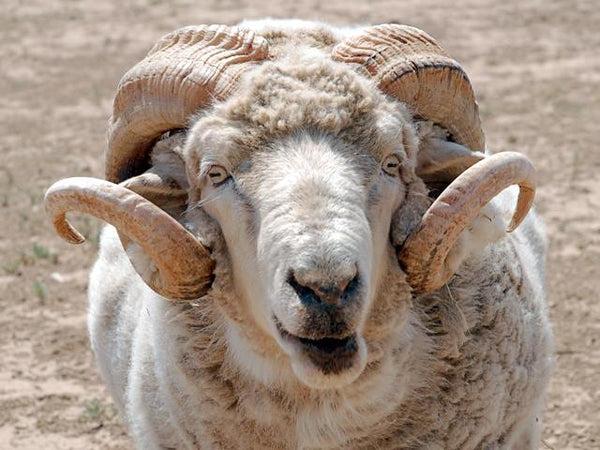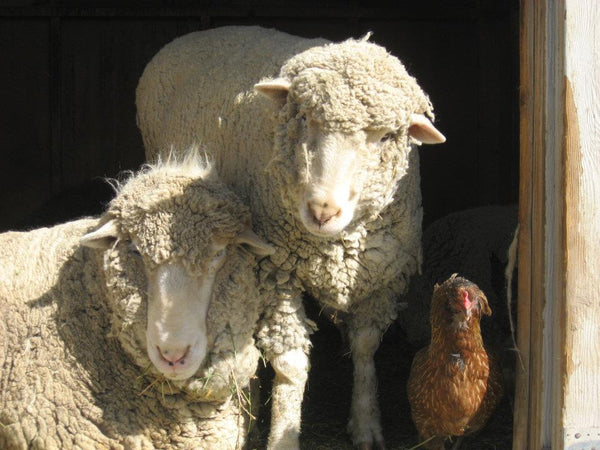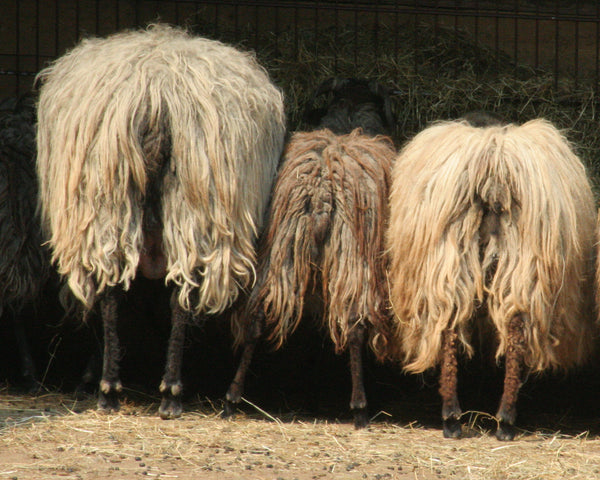Your Cart is Empty
Free Shipping on all Orders Over $50 in the US
Free Shipping on all Orders Over $50 in the US
February 16, 2015 3 min read 1 Comment
2015 is the Year of the Sheep according to Chinese zodiac. The Chinese Zodiac is based on a twelve year cycle, each year in that cycle related to an animal sign. The Year of the Sheep starts from February 19, 2015 and lasts to February 7, 2016.

Occupying the 8th position in the Chinese Zodiac, the sheep (goat, or ram) is among the animals that people like most, symbolizing such character traits as creativity, intelligence, dependability, and calmness. They are gentle, sensitive animals who are emotionally complex and highly intelligent.
That’s why, we’re celebrating the Year of the Sheep!!
Marley (Ram) at Peaceful Prairie Sanctuary
Playful, and Puppy-like
Sheep are intensely inquisitive and have an intelligent nature; they will explore anything new or unfamiliar in their surroundings. They are known to wag their tails when stroked, affectionately nuzzle, and gently head-butt to get attention. Group play is very common. Lambs love to climb.
Social and Emotional
Sheep are a very social animal. They can distinguish between different expressions in humans and can detect changes in the faces of anxious sheep. Sheep can recognize the faces of at least 50 other sheep.
Like people, sheep visibly express emotions. When they experience stress or isolation, they show signs of depression similar to those that humans show by hanging their heads and avoiding positive actions. While grazing, they like to always have visual contact with other sheep.

Iggy, Hilary, and Mitzy at Peaceful Prairie Sanctuary
Famous People Born in the Year of the Sheep
“It is just like man’s vanity and impertinence to call an animal dumb because it is dumb to his dull perceptions.” – Mark Twain
"Non-violence leads to the highest ethics, which is the goal of all evolution. Until we stop harming all other living beings, we are still savages." – Thomas Edison
"I'd rather go naked than wear fur." – Pamela Anderson
"Many things made me become a vegetarian, among them, the higher food yield as a solution to world hunger." – John Denver
Behind the Wool Industry
The wool industry is anything but warm and fuzzy. Although sheep are intelligent, social, emotional beings, the wool industry is cruel, bloody, and infested with violence in ways that could warrant animal-cruelty charges if the victims were dogs or cats. There are plenty of durable, stylish, and warm fabrics available that aren’t made from wool or animal skins.
Wool Alternatives
Soy Silk/Cashmere
Like hemp, soy is extremely versatile in its uses. It’s an eco-friendly and cruelty-free alternative to silk and cashmere, which both involve the use of animals in their production.
Save a Sheep – Don’t Buy Wool.
Hangin' with Howie at Peaceful Prairie Sanctuary
Comments will be approved before showing up.
Kapil Sharma
July 05, 2015
Thanks for sharing this Post. Very informative.
Regards.
Kapil
Ecowings